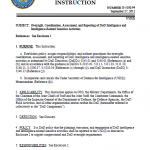
Establishes policy, assigns responsibilities, and outlines procedures for oversight, coordination, assessment, and reporting of DoD intelligence and intelligence-related sensitive activities.
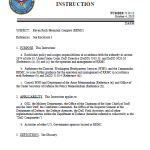
The mission of RRMC is to support the Secretary of Defense, the Chairman of the Joint Chiefs of Staff, select DoD Components and, as appropriate, non-DoD agencies of the Federal Government, and to enable the execution of DoD mission-essential functions (MEFs) in accordance with DoDD S-5100.44 and continuity of operations (COOP) plans and operational orders.
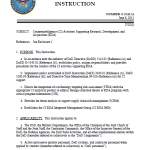
The CI mission in RDA informs the DoD Components and supporting CDCs of foreign collection threats and detects FIE targeting of defense-related technology. The CI support enables RDA program personnel to implement countermeasures and enables CI to develop activities that negate, counter, penetrate, or exploit an FIE.
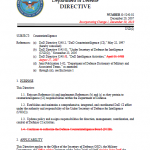
Defense CI activities shall be undertaken as part of an integrated DoD and national effort to detect, identify, assess, exploit, penetrate, degrade, and counter or neutralize intelligence collection efforts, other intelligence activities, sabotage, espionage, sedition, subversion, assassination, and terrorist activities directed against the Department of Defense, its personnel, information, materiel, facilities, and activities, or against U.S. national security.
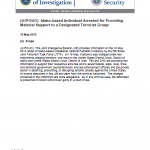
This Joint Intelligence Bulletin (JIB) provides information on the 16 May 2013 arrest of Idaho-based Uzbekistan national Fazliddin Kurbanov by the FBI Boise Joint Terrorism Task Force (JTTF). On 16 May, Kurbanov was charged under two indictments alleging terrorism, one each in the United States District Court, District of Idaho and United States District Court, District of Utah. FBI and DHS are providing this information to support their respective activities and to assist federal, state, local, tribal, and territorial government counterterrorism and law enforcement officials and the private sector in deterring, preventing, or disrupting terrorist attacks against the United States. All events described in this JIB are taken from the criminal indictment. The charges contained in the indictment are mere allegations. As in any criminal case, the defendant is presumed innocent until proven guilty in a court of law.
A Provincial Reconstruction Team (PRT) is a civil-military organization, task-organized to a geographical province, whose purpose is to extend the reach and legitimacy of the Central Government of Afghanistan by developing a self-sustaining, peaceful, civil-society. It is a tactical organization with strategic impact. The ratio of military to other governmental, United Nations (UN), and non-governmental organizations depends heavily on the degree to which the area is pacified. The success of a PRT is measured by its ability to increase Central Government capacity and good governance as well as to, “Seize the human terrain and defeat the enemy.” One important element of this is to identify and mentor key Afghan personnel in democratic governance and leadership.
State, local, tribal and territorial (SLTT) computer networks have been increasingly targeted by cyber adversaries. At the same time, the expansion of mobile devices integrated into SLTT networks provides new opportunities for cyber adversaries seeking to collect information or disrupt operations by compromising mobile technology and exploiting vulnerabilities in portable operating systems, application software, and hardware. Compromise of a mobile device can have an impact beyond the device itself; malware can propagate across interconnected networks.
Many networks run by public and private organizations have experienced intrusions in recent years, and this cyber exploitation has resulted in an unprecedented transfer of wealth due to lost intellectual property. The threats to our networks and systems exist across numerous components that include end-user-devices, servers, and infrastructure devices. To address threats to routers and other network infrastructure devices, the National Security Agency’s Information Assurance Directorate (IAD) is publishing this IAA to guide U.S. Government systems accreditors’ strategic plan for network hardening.
Adversary actors in cyberspace continue to demonstrate the interest in and ability to execute Distributed Denial of Service (DDoS) attacks against the United States. The need to offer Internet services in support of mission requirements inherently exposes these services to malicious traffic and the potential for DDoS attack. Proactive preparation to ensure network resilience in the event of a DDoS event is essential. Reactive measures are feasible, but are often too slow to respond to the dynamic nature of today’s threat.
Terrorists and violent extremists have used—or considered using—diversionary tactics in terrorist attacks overseas. Diversionary tactics are often used to draw security forces and first responders away from the intended primary target of the attack and may be used as part of a complex or multi-pronged attack. Diverting first responders to a location other than the primary target of an attack delays the response and the provision of medical care to victims, and depletes first responder resources.
This handbook provides the tactical operator, commander, and battle staff with information on planning, executing, assessing, and sustaining information operations (IO). The handbook is based on observations collected in Iraq during July and August 2004 by an IO collection and analysis team (CAAT). The application of this tool is both for training and real-world events the Soldier may encounter in the Iraqi area of operations.
A Defense Security Service presentation from December 2012 outlining information and statistics on defense industrial base cyber incidents and intrusions.
Websites and emails referencing the Boston Marathon bombing should be viewed with caution, as malicious actors are using the incident to disseminate malware and conduct fraud. While other agencies investigate the frauds, the NJ ROIC provides this information for situational awareness.
Nation-state adversaries regularly use accounts on popular social networking sites to facilitate social engineering against DoD members. Information disclosed or discovered on social networking sites creates a significant operations security (OPSEC) concern and in the context of a wide spread collection effort could be by adversaries to form a classified picture.
Approximately fifty million students attend nearly 100,000 public elementary and secondary schools throughout the Nation. Elementary and secondary schools are relatively open-access, limited egress congregation points for children, and have been successfully targeted by terrorists in the past.
A facilitated brainstorming session was convened to identify and examine the most common misconceptions about conventional Homeland plotting. These misconceptions stemmed from inquiries received from Federal, state, local, tribal, and private-sector consumers and from articles published by outside experts and in the media. Analysts identified the following six misconceptions as the most common and compared them with current analytic lines.
This Joint Intelligence Bulletin provides law enforcement and private sector safety officials with protective measures in light of the recent explosions that took place at the 2013 Boston Marathon in Boston, Massachusetts. The information is provided to support the activities of DHS and FBI and to assist federal, state, local, tribal, and territorial government counterterrorism and first responder officials and the private sector to deter, prevent, preempt, or respond to terrorist attacks in the United States.
This Joint Intelligence Bulletin provides information on the devices used in the 15 April 2013 Boston Marathon explosions. The information is intended to provide aid in identifying devices and to support the activities of DHS and FBI and to assist federal, state, local, tribal, and territorial government counterterrorism and first responder officials and the private sector to deter, prevent, preempt, or respond to terrorist attacks in the United States.
This is an update of an RCR published on 1 July 2010. Rudimentary improvised explosive devices (IEDs) using pressure cookers to contain the initiator, switch, and explosive charge frequently have been used in Afghanistan, India, Nepal, and Pakistan. Pressure cookers are common in these countries, and their presence probably would not seem out of place or suspicious to passersby or authorities. Presence in an unusual location—or if noticed in a contanier such as a backpack—should be treated as suspicious.
The FBI assesses with high confidence recreationally used exploding targets (ETs), commonly referred to as tannerite, or reactive targets, can be used as an explosive for illicit purposes by criminals and extremists and explosive precursor chemicals (EPCs) present in ETs can be combined with other materials to manufacture explosives for use in improvised explosive devices (IEDs).
Recent FBI intelligence from multiple FBI HUMINT sources indicates a shift in Los Zetas recruiting methods and reliance on non-traditional associates. Past, accurate FBI reporting indicated Los Zetas previously focused its recruitment on members with prior specialized training, such as ex-military and ex-law enforcement officers, and not on US-based gangs or US persons in order to maintain a highly-disciplined and structured hierarchy. This hierarchy, which resembled a military-style command and control structure, facilitated drug trafficking operations and maintained lines of authority. However, current FBI reporting indicates that Los Zetas is recruiting and relying on non-traditional, non-military trained associates—US-based prison and street gangs and non-Mexican nationals—to perform drug trafficking and support operations in Mexico and in the United States.
This report is a continuation of the collection effort on units supporting operations in Afghanistan as directed by the Deputy Commandant for Combat Development and Integration. The collection sought to examine the mission, scope, successes, shortfalls, equipment, manning and emerging issues associated with 4th Light Armored Reconnaissance Battalion (4th LAR) operations. Interviews of 28 commanders and staff were conducted at various camps and bases in Afghanistan from December 2009 – April 2010.
Expressed or implied threats by an individual or a group communicating intent to commit acts of terrorism or violence or advocating violence against a person, population, or to damage or destroy a facility can be an indicator of pre-operational attack planning. For example, in 2010 a Virginia-based US person pled guilty to communicating threats after he posted a video to the Internet encouraging violent extremists to attack the creators of a television show, including highlighting their residence and urging online readers to “pay them a visit.” He also admitted to soliciting others to desensitize law enforcement by placing suspicious looking but innocent packages in public places, which could then be followed up by real explosives.